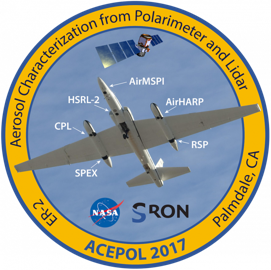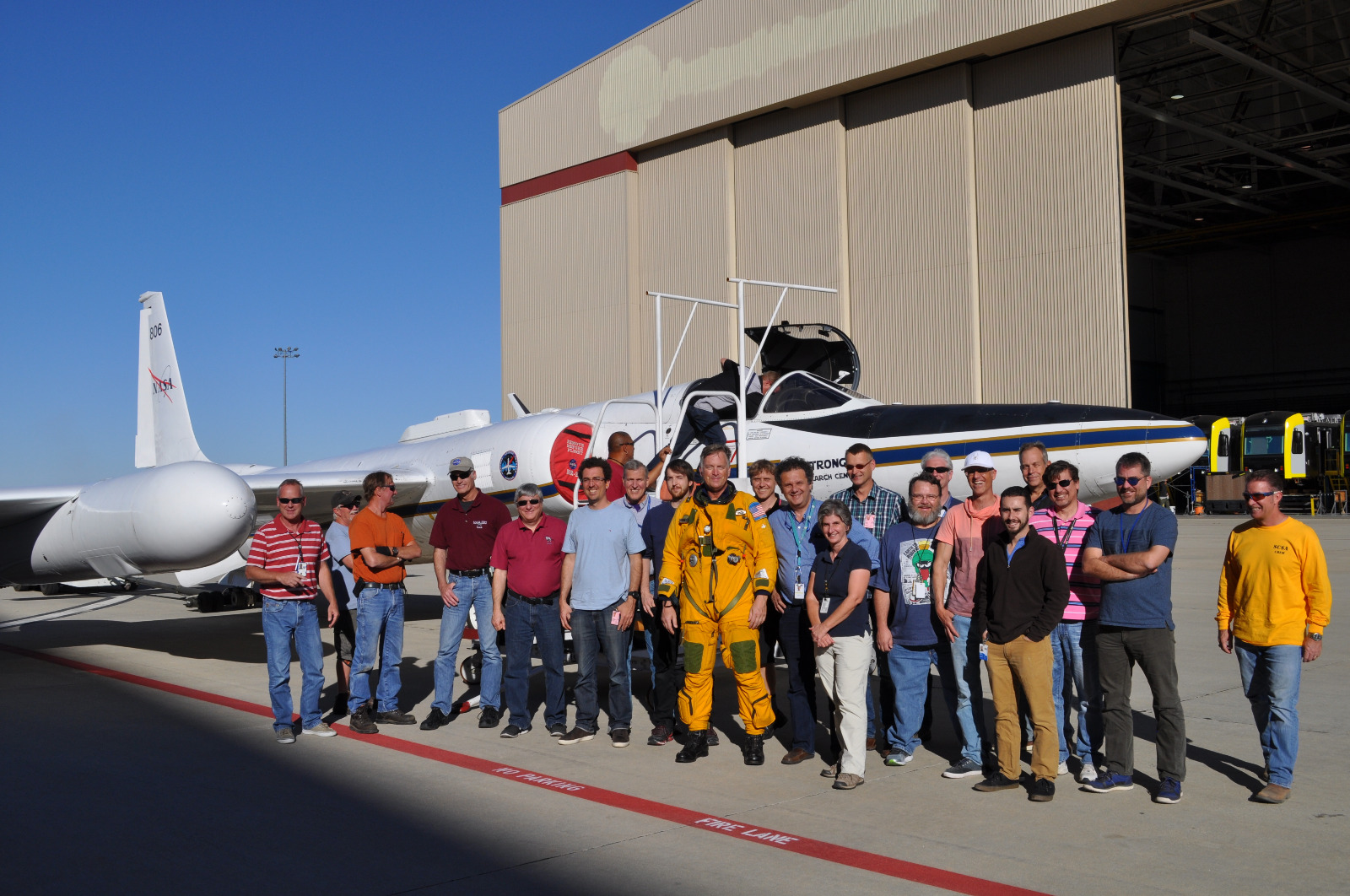From 23 October till 10 November 2017, SRON’s polarimeter SPEX airborne is participating in a campaign with the NASA high altitude research aircraft ER-2, targeting aerosols (pollution, smoke from forest fires) and clouds. Flights are operated from NASA Armstrong Flight Research Center in Palmdale, California. The campaign has been initiated by a NWO funded project ACEPOL of Principal Investigator Otto Hasekamp (SRON), aiming to combine data from a suite of instruments, to improve measurements of aerosol and cloud properties.
Due to large interest of NASA, ACEPOL has grown to a substantial campaign of 50 flight hours. NASA is funding the majority of the flight hours on the ER-2, the deployment of instrument teams, and flight planning activities.

The ACEPOL campaign is relevant for planned aerosol/cloud/ocean missions from NASA such as PACE, ACE, but also to ESA missons such as Earthcare and METOP-SG. Currently NASA plans to fly two polarimeters on PACE: HARP and SPEXone, where the latter is a space-borne version of SPEX airborne.
SPEXone is being designed as a six-unit cubesat payload by a Dutch consortium of SRON and Airbus Defence & Space Netherlands (ADSN), supported by TNO.
For ACEPOL, the ER-2 carries four polarimeter instruments and two LIDARs. So far, seven flights were made over a large variety of weather conditions and terrains. A vast amount of data has been collected, and data processing is well underway for almost all of the instruments, including SPEX airborne.
One of the highlights of the campaign is a flight over a forest fire in the Grand Canyon, of which thick smoke is clearly visible in SPEX data.

To be continued!
More information on the SPEX concepts and roadmap: https://www.sron.nl/earth-instrument-development/spex
More information on remote sensing aerosol https://www.sron.nl/remote-sensing-aerosol
More information on ACEPOL https://www-air.larc.nasa.gov/missions/acepol/index.html
More information on ACEPOL https://www.nwo.nl/en/research-and-results/research-projects/i/77/27477.html


